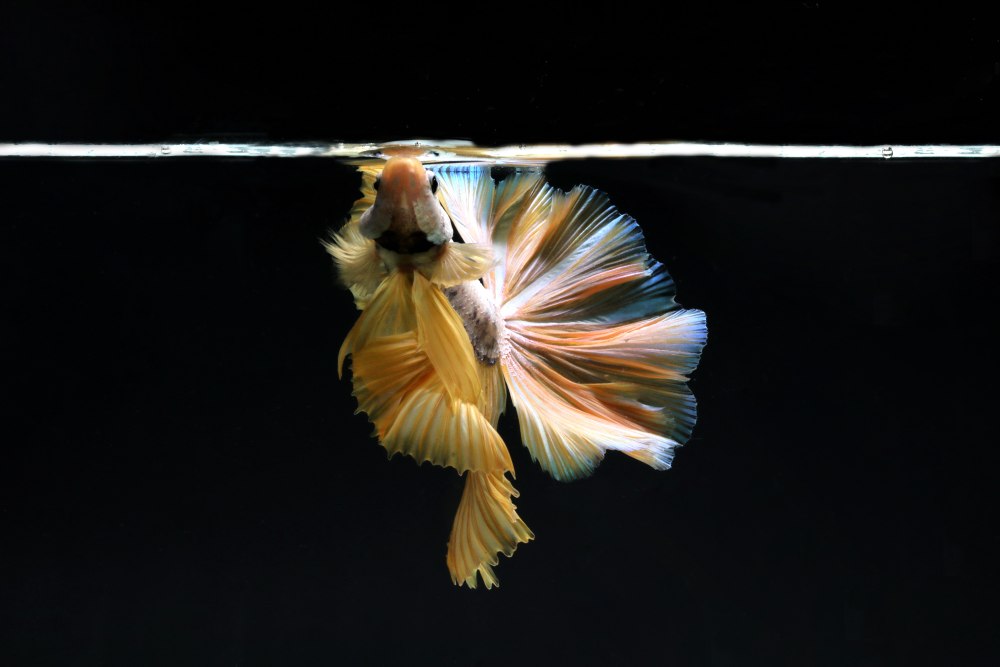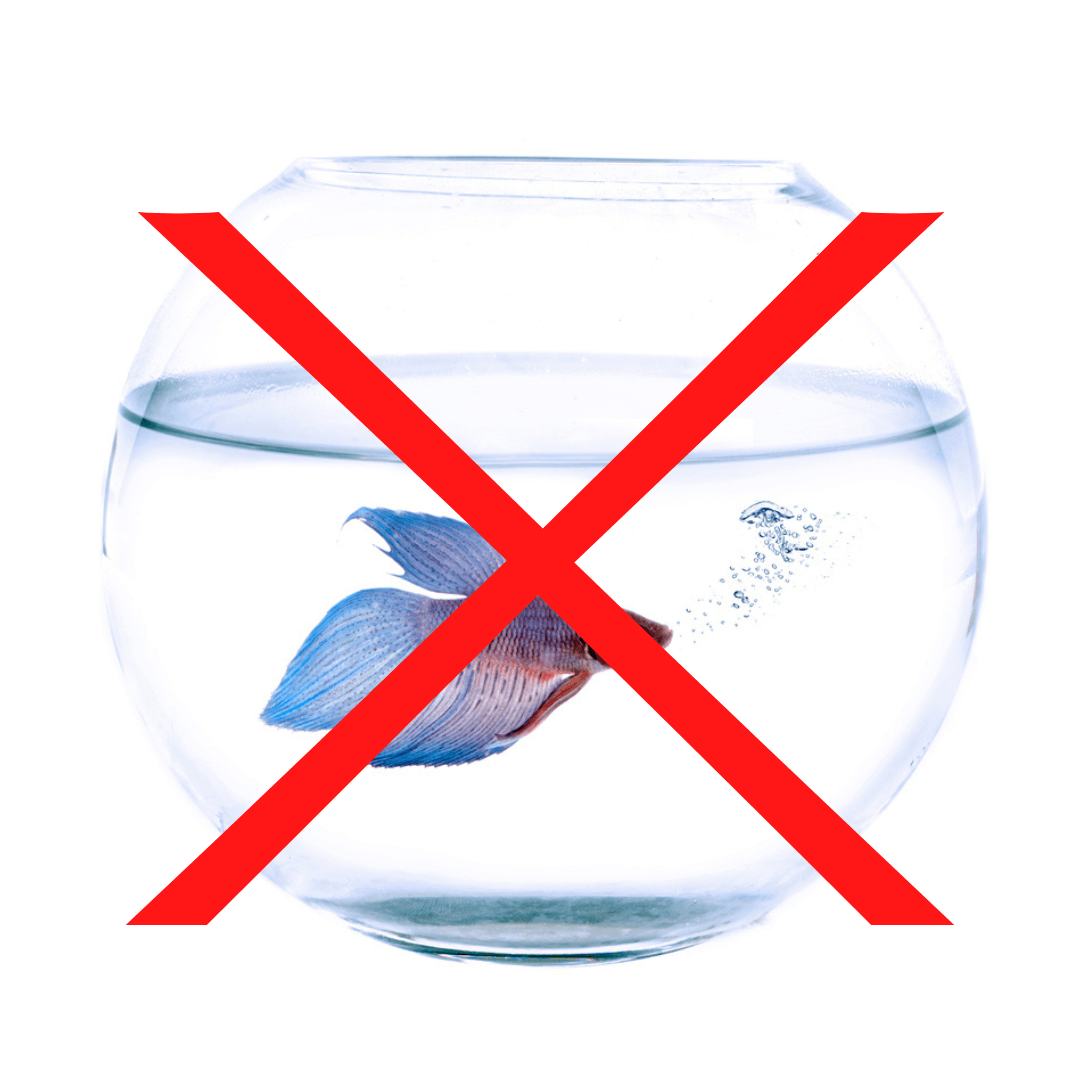Whether you’re just starting out as a pet parent or have been caring for fish for years, it’s important to understand what type of environment your betta needs in order to thrive.
Many people wonder if they can keep their betta fish in a bowl. While there are plenty of opinions on the matter, understanding the basics behind this question is key to providing a healthy home for your pet.
In this article, we’ll explore whether betta fish can live in a bowl and how best to provide them with an optimal living environment.
No one wants to put their beloved pets at risk – so let’s dive into the specifics behind keeping bettas in bowls.
We’ll look into the pros and cons of doing so, discuss some alternative options that may be more suitable, and address any concerns you might have about giving your betta the love and care it deserves.
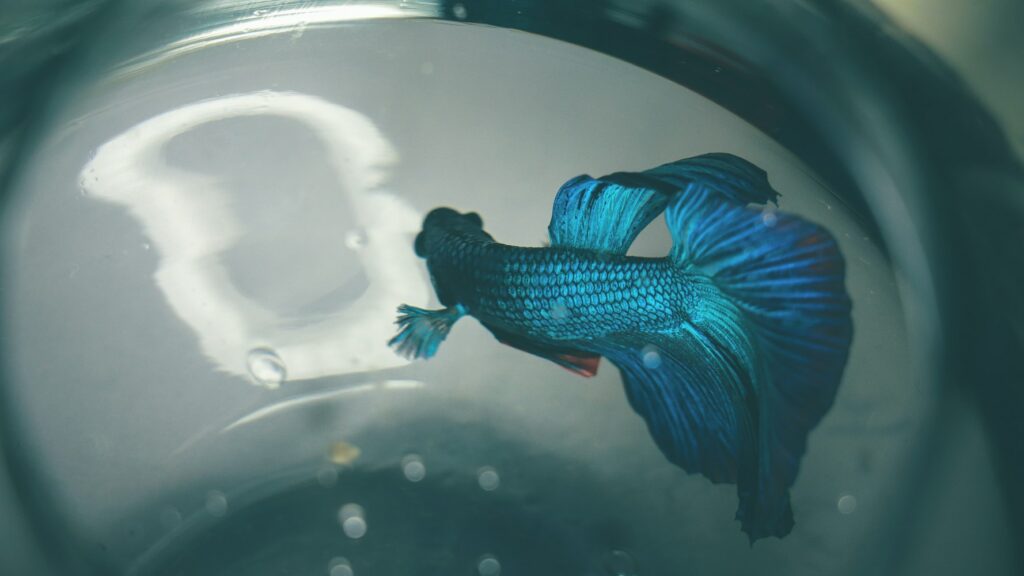
What is a Betta Fish?
Betta fish are a stunning species of aquatic creature that captivate people with their colorful fins, vibrant personalities and calming presence. They have an ethereal beauty about them—like tiny living gems swimming in the deep blue sea.
But where do these magical creatures come from?
Native to Thailand and other parts of Southeast Asia, betta fish can be found in paddy fields, ditches, ponds and slow-moving streams. Betta fish take their name from an ancient clan called the “Warrior Bettas” who were known for fiercely defending their territory against intruders. These little warriors use their bright colors and elaborate fins to signal threats or attract mates.
Their home is far different than a bowl; in nature they thrive in wide open spaces filled with vegetation and natural surfaces like rocks, wood and leaves to hide behind if needed. While bettas can survive in small bowls or tanks – they will not reach their full potential!
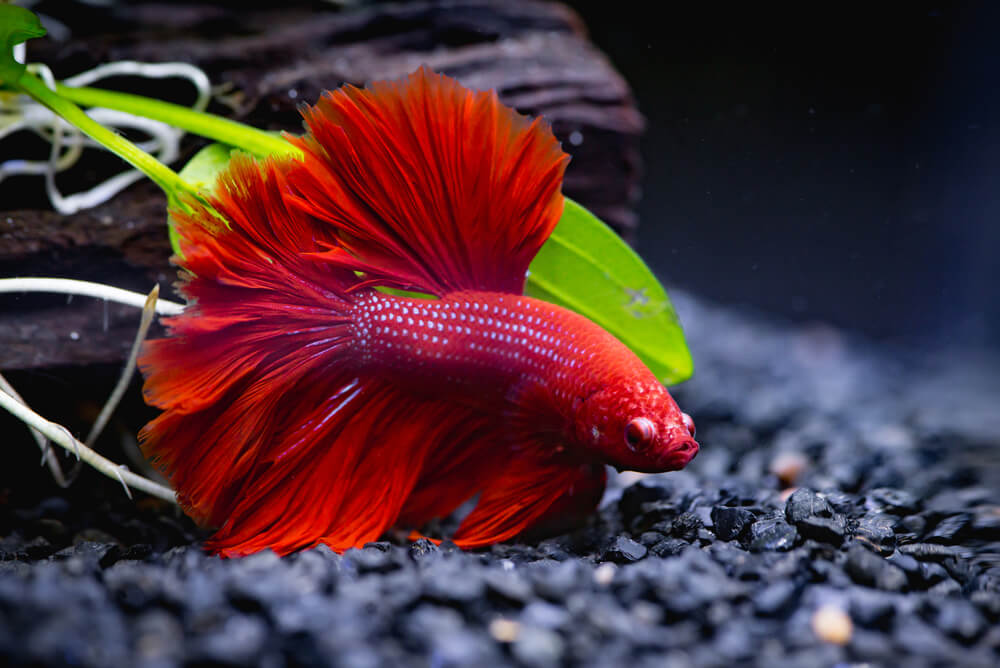
Can Betta Fish Live in a Bowl?
Betta fish are a popular choice of pet for many people due to their beautiful colors and relatively easy maintenance. But one question that is often asked is whether betta fish can live in a bowl or not?
The answer, unfortunately, is no – despite what some may think. The size of the tank needed for a betta fish depends on its size but most experts recommend at least a five gallon aquarium with an air pump and filter system. Having said this, it should be noted that even larger tanks need frequent water changes to ensure good health and longevity for the fish.
A small bowl simply cannot provide enough space or filtration to keep your betta healthy. Furthermore, bowls typically don’t have lids which makes them difficult to maintain temperature stability as well as prevent other pets from harassing or attempting to eat the betta.
So if you’re looking for an aquatic companion, then consider investing in a proper aquarium setup instead of going with a simple bowl if you want your new pet to thrive! Betta fish are incredibly interesting creatures and will bring plenty of joy into any home – just remember they need more than just water in order to stay happy and healthy!

What Size Tank is Best for a Betta Fish?
When it comes to housing a betta fish, one of the most important considerations is what size tank to use. The general rule for this type of fish is that they should be kept in an aquarium with at least five gallons of water. Anything smaller than that will not provide them enough space to swim around and can cause them unnecessary stress.
Betta fish are quite active swimmers so their environment needs to offer plenty of swimming room. A five-gallon tank or larger would be ideal.
Smaller tanks such as those under two gallons can often become too small too quickly due to the rapid growth rate of these particular species, leading to health issues down the line.
Furthermore, having more volume of water means there’s also more area for beneficial bacteria which helps keep your betta’s environment safe and healthy. Additionally, depending on the number of plants you have in the tank, you may need additional filtration and circulation systems like a pump or filter unit – all things that require adequate space inside the tank itself.
To sum up, when selecting a suitable home for your betta fish, always consider its size first – bigger is better! Not only does it give them more space to move around but it also allows you to create a healthier living environment for them by providing increased oxygenation levels along with proper waste management techniques which cannot be achieved using smaller tanks.
What Should I Put in the Tank?
When considering the optimal environment for a betta fish, size can be an important factor.
With this in mind, it’s time to think about what should go inside the tank that will provide your betta with its own little home.
First and foremost, you’ll need bottom substrate such as gravel or sand to cover the base of the tank. This will help keep everything clean while also providing your betta with something to explore and swim around in.
An aquarium filter may not be essential but is certainly recommended; without one, water changes become much more laborious and you’ll have to remove some of the water manually every few days in order to maintain good hygiene levels.
Plants are another great addition that provide plenty of hiding places for your fish when they want some peace and quiet away from prying eyes! Try choosing plants with smooth edges so that they don’t hurt your finned friend if they brush against them accidentally.
Artificial decorations like pirate ships can look nice too – just make sure there aren’t any sharp points where your fish could get injured! It’s also worth noting that all items placed into the tank must first be sterilized before being added to avoid introducing bacteria which could harm our scaly friends.
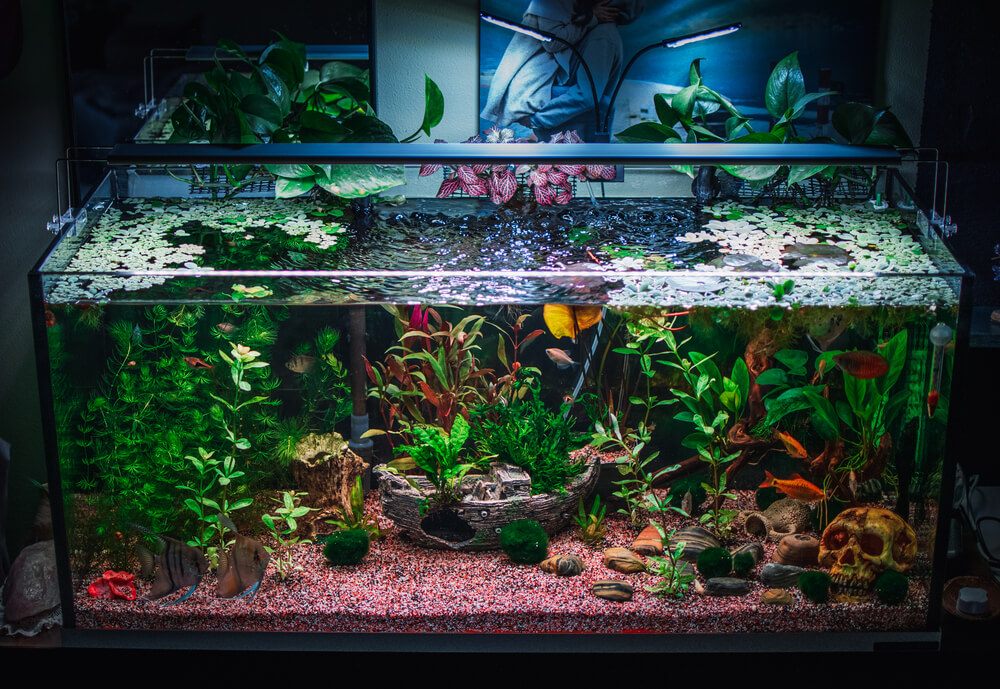
How Often Should I Change the Water?
Once your tank is all set up, keeping it clean is essential for maintaining healthy conditions for your betta. Ideally, you should be doing weekly changes of your tank’s water of about 20% if you have a filter, or 30-50% if you do not have a filter. You should also be cleaning any debris from the gravel or decorations they may have. Doing this will help keep ammonia levels low while also preventing algae build-up on any rocks or décor in the tank.
Besides regular maintenance, there are some additional steps you can take to ensure optimal living conditions for your betta:
- Adding a filter and/or aerator to increase oxygenation
- Using an aquarium thermometer to regulate the temperature
- Making sure not to overcrowd their home by only introducing compatible species into the same environment.
Taking these precautions will go a long way towards creating a safe and comfortable habitat for your betta friend!
How Can I Ensure My Betta’s Health And Happiness?
Having looked at other options for housing your betta, it’s now important to understand how best to ensure their health and happiness.
Firstly, the size of the tank is paramount; a single fish needs around five gallons in volume with plenty of room for swimming. As well as being large enough for them to move freely, filtration systems should also be taken into account; these will help keep the water clean and free from any nasties that could harm your little buddy.
Secondly, providing them with an appropriate environment is key. Betta fish like warm temperatures (between 75-80°F) so an appropriate heater will need to be installed along with areas offering shade and hiding spots which can come in the form of rocks or plants. It’s also important to make sure there are no sharp edges inside the tank that may hurt your fish if they swim too close.
In addition to this, regular maintenance is essential: filter cartridges should be replaced every 4-6 weeks while 20% water changes weekly serve to reduce ammonia levels and keep things fresh – ideally you’ll want a gravel vacuum cleaner on hand here!
On top of all this, try adding some variety via live food such as brine shrimp or bloodworms – your betta will love you for it!
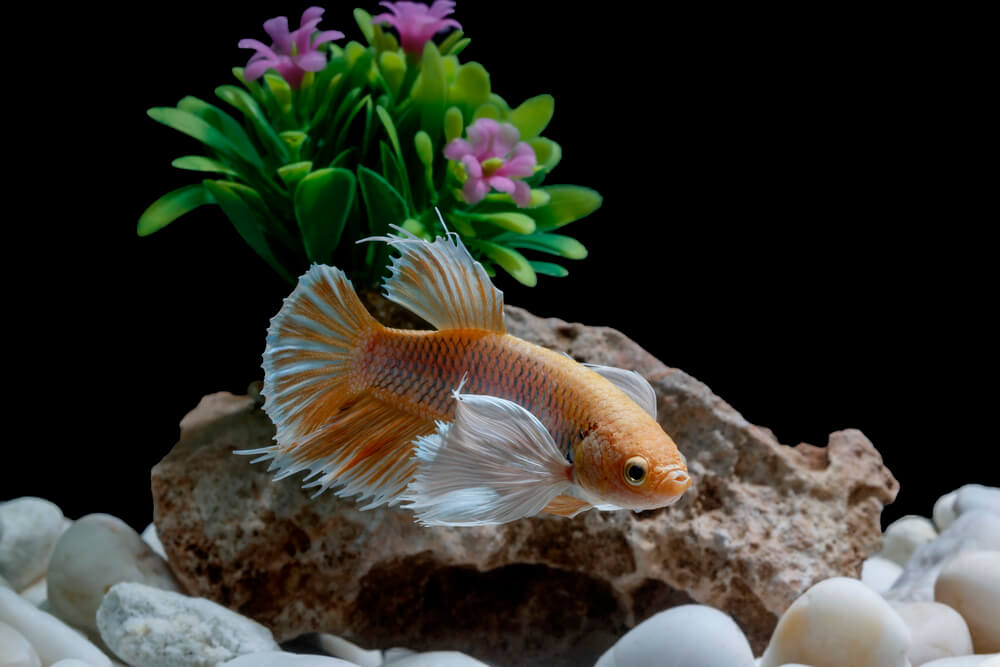
Conclusion
In conclusion, it’s important to remember that keeping a betta fish in a bowl is not ideal. Keeping them in an aquarium with the proper size and setup provides the best environment for their health and happiness.
Although it may seem easier to keep them in a bowl, taking the time to do things right can make all the difference for your pet – ‘a stitch in time saves nine’.
It’s up to you as their owner to provide everything they need so that they can thrive. With knowledge and care, you’ll be well on your way to having a healthy and happy betta!
